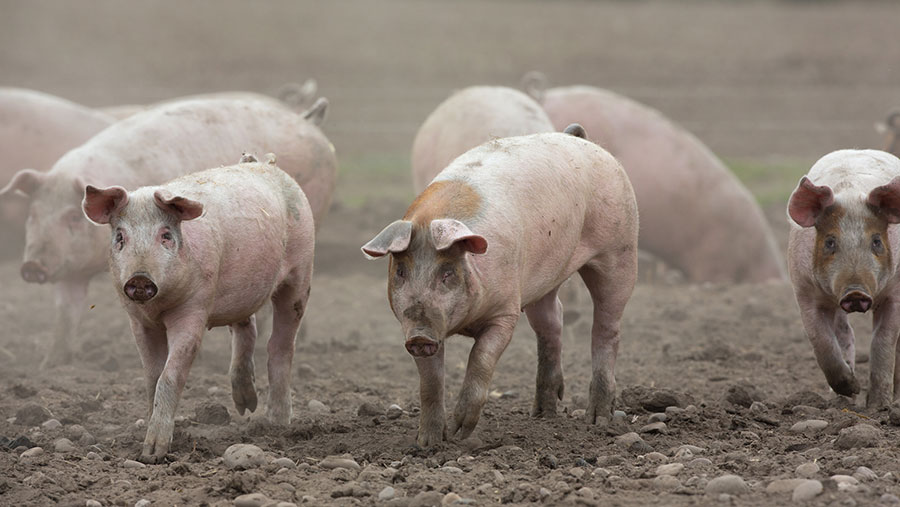DNA testing trial may improve pig performance and traceability
 © Tim Scrivener
© Tim Scrivener A successful electronic identification and DNA testing trial offers traceability opportunities for the pork industry, which could improve performance management.
The end-to-end traceability project, sponsored by AHDB Pork, explored the possibility of using data to assess traceability in the pigmeat industry proving it possible to trace meat samples back to individual maternal sows.
Dominic Charman, technical manager at AHDB Pork, said: “It’s the first time, we think, we’ve tracked DNA from a carcass back to a maternal sow.”
See also: 8 key tips on improving gilt productivity
“This project is about how we can use data and how we can use traceability to improve the reputation of the industry,” Mick Sloyan, strategy adviser for AHDB Pork, told attendees at the Pig and Poultry Fairy on 15 May.
The research
The small-scale trial had two components:
- The use of ultra-high frequency EID tags in piglets to track performance, health and kill data
- DNA testing carcass and meat samples to see if traceability back to individual sows is possible.
The research was very successful:
- An ear-tag reader was manufactured to accurately record carcass data in the abattoir, which can be used to review and assess performance (see “The analysis possibilities”, below)
- Using DNA testing, slaughtered animals were traced back to birth. The researchers sent meat samples from the carcasses of two progeny per sow as well as samples from non-trial animals to the laboratory. They were mixed up and unlabelled, but by looking at the DNA, the laboratory was able to accurately identify which carcass was of the progeny of which sow and eliminate all the non-trial samples.
The analysis possibilities
AHDB Pork are working on development of a software programme to present the information recorded by EID tags.
The sophisticated software allows a producer to filter data to a very detailed level to look at the performance of progeny from an individual sow, or look at a particular parity, for example.
It also has the ability to capture medical information. And the use of predictive analytics could enable producers to predict the carcass weights of an animal, at an accuracy level of within 6kg, using birthweights and maternal sow parity.
Mr Charman thinks this data could help farmers to make informed breeding decisions, culling decisions and refine management based on the capture of grading information in the abattoir.
On the traceability side, the ability to track an animal from birth to slaughter can help measure performance, antibiotics reduction and industry reputation with consumers.
The farmer cost
Mr Charman told delegates the EID and DNA tracking and testing cost about 70p per finished pig, which included tagging and weighing at birth.
This is in comparison with a 3-5p cost for slap marking pigs. However, Mr Charman believes there are costs to be gained from such recording, for example:
- Moving 5% more pigs into spec could be worth £1 a pig
- Halving pleurisy could be worth £1 a pig
- And the collated data could be valuable to the industry as a whole.

